The mobile Nvidia RTX 3080 and RTX 3070 are here: what can they do?
How do the RTX 3000 mobile GPUs stack up?
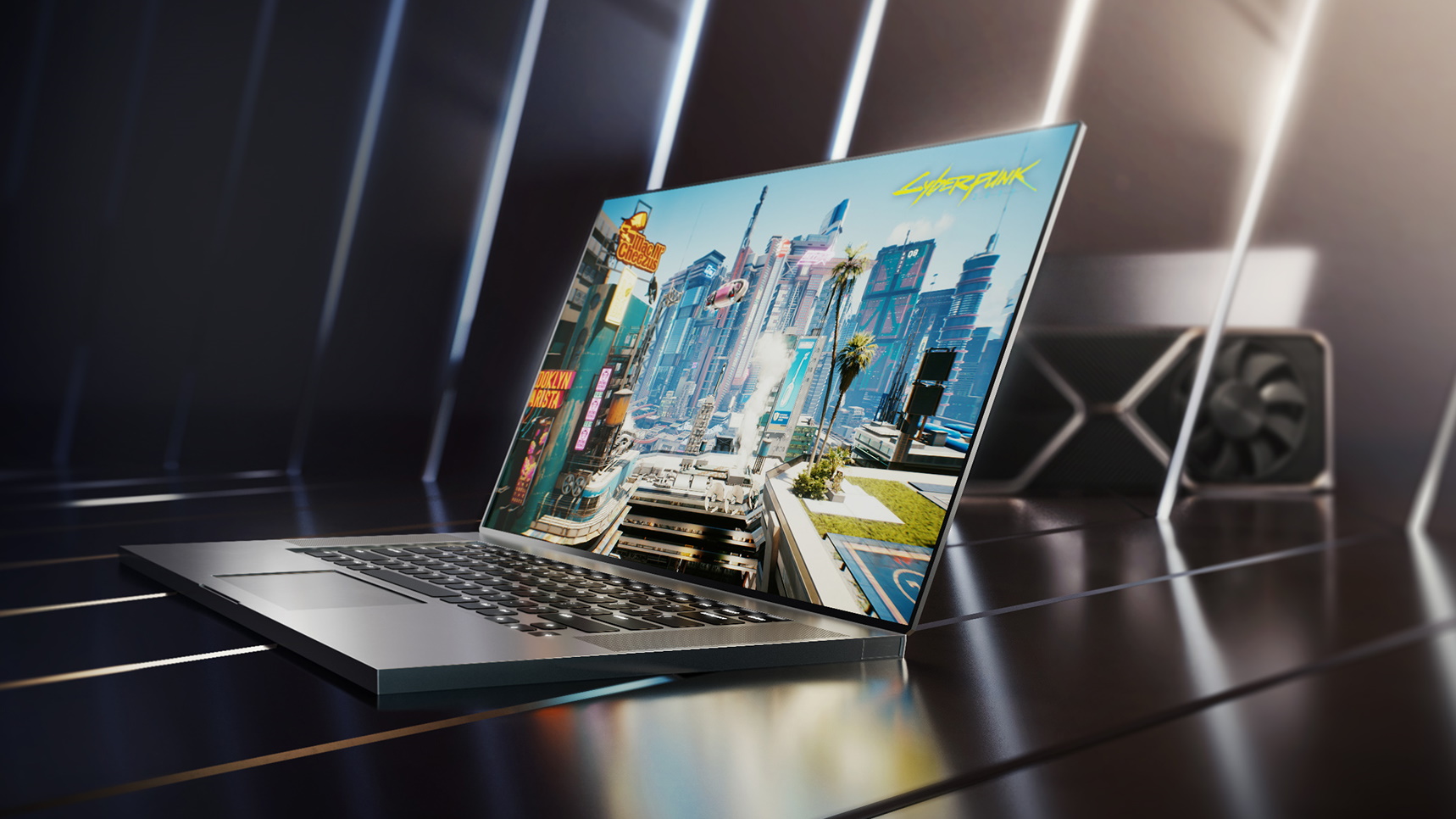
Back at CES 2021, Nvidia announced its RTX 3000 laptop graphics processors, powering a whole new generation of the best gaming laptops. At first glance, this new lineup is pretty easy to follow, as the three GPUs on offer are the Nvidia GeForce RTX 3080, RTX 3070 and RTX 3060 - three desktop graphics cards that dropped in 2020.
However, as always, the constraints of a mobile form factor mean that you're not exactly getting the same graphics card as the name implies. For the most part, this isn't really a big deal - it's a bit silly to expect that a laptop is going to be able to provide the same amount of raw horsepower that a full desktop system with unlimited power and cooling can offer.
But because the naming stays consistent, even though the silicon itself changes, it can be a bit confusing for folks that just want to know how powerful the laptop they're thinking of buying is. So, we went ahead and put a couple of RTX 3000 gaming laptops head-to-head with desktop graphics cards to see where exactly they line up.
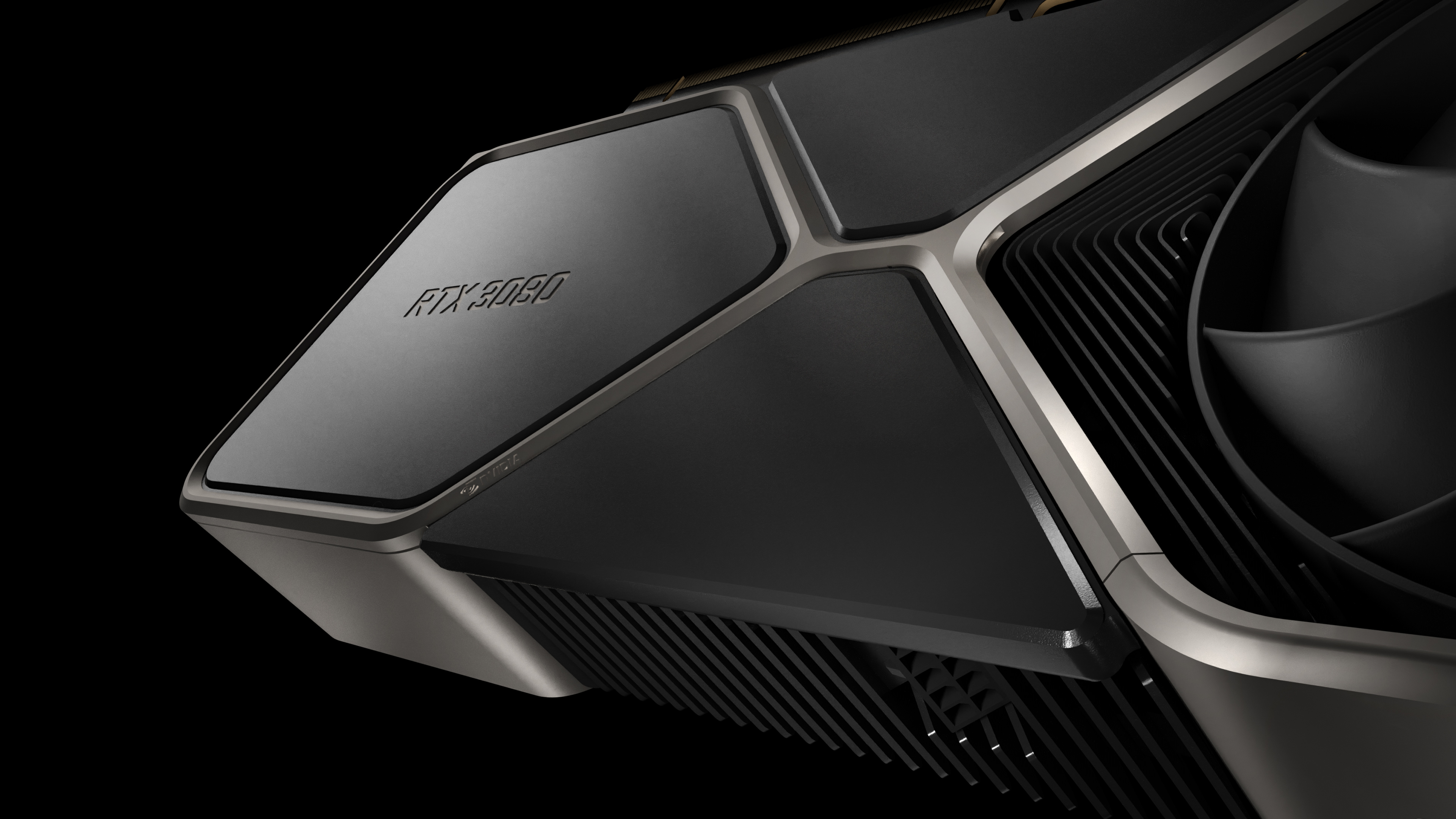
An imperfect scenario
Alienware m17 (2021):
CPU: Intel Core i9-10980HK
RAM: 32GB
SSD 1: 512GB
SSD 2: 2TB
GPU: Nvidia GeForce RTX 3080
Asus TUF Dash F15:
CPU: Intel Core i7-11370H
RAM: 16GB
SSD: 1TB
GPU: Nvidia GeForce RTX 3070 with Max-Q
Desktop test system:
CPU: Intel Core i5-10600K
CPU Cooler: Cooler Master Masterliquid 360P Silver Edition
Motherboard: MSI MEG Z490 GODLIKE
RAM: 16GB
SSD: ADATA XPG SX8200 Pro 1TB
Case: Praxis Wetbench
One thing we need to stress before we get into any of the nitty-gritty is that there is no way to effectively test a mobile graphics card in a controlled environment.
Mobile graphics processors are tuned by the manufacturers of the laptops, so this is in no way a definitive review of these GPUs. Instead, we aim to give a ballpark estimate of what these GPUs can do, so you know what to expect when you pick up that shiny new gaming laptop.
We tested two gaming laptops for this purpose, the Asus TUF Dash F15 and the Alienware m17, the specs of which are listed in the box to the right. One thing to note is that these laptops are kind of polar opposites in the way they're configured, which helps to illustrate the diversity of performance that gaming laptops offer.
The Alienware system is all about pushing performance to the max, packed with the most powerful, no-holds-barred hardware on the market today. Then, the Asus TUF Dash is packed with one of Intel's new Comet Lake-H35 processors. Rather than pushing performance above all else, these processors are all about portability. That means that this system is valuing a thin and light form factor above raw performance, and the results speak to that.
Get daily insight, inspiration and deals in your inbox
Sign up for breaking news, reviews, opinion, top tech deals, and more.
For comparison's sake, we benchmarked the desktop graphics cards on a computer with an Intel Core i5-10600K and 16GB of RAM clocked at 3,200MHz. The reason we went with this configuration is that the 6-core, 12-thread Core i5 processor is close enough to where Intel's mobile processors are right now. However, it's important to note that we cooled the processor with a 360mm AIO liquid cooler, so it was able to boost higher and for longer than can be expected of a mobile processor.
Still, that didn't stop the RTX 3080 from being extremely bottlenecked at 1080p, which is likely another reason that Nvidia went with a less powerful GPU for the laptop version.
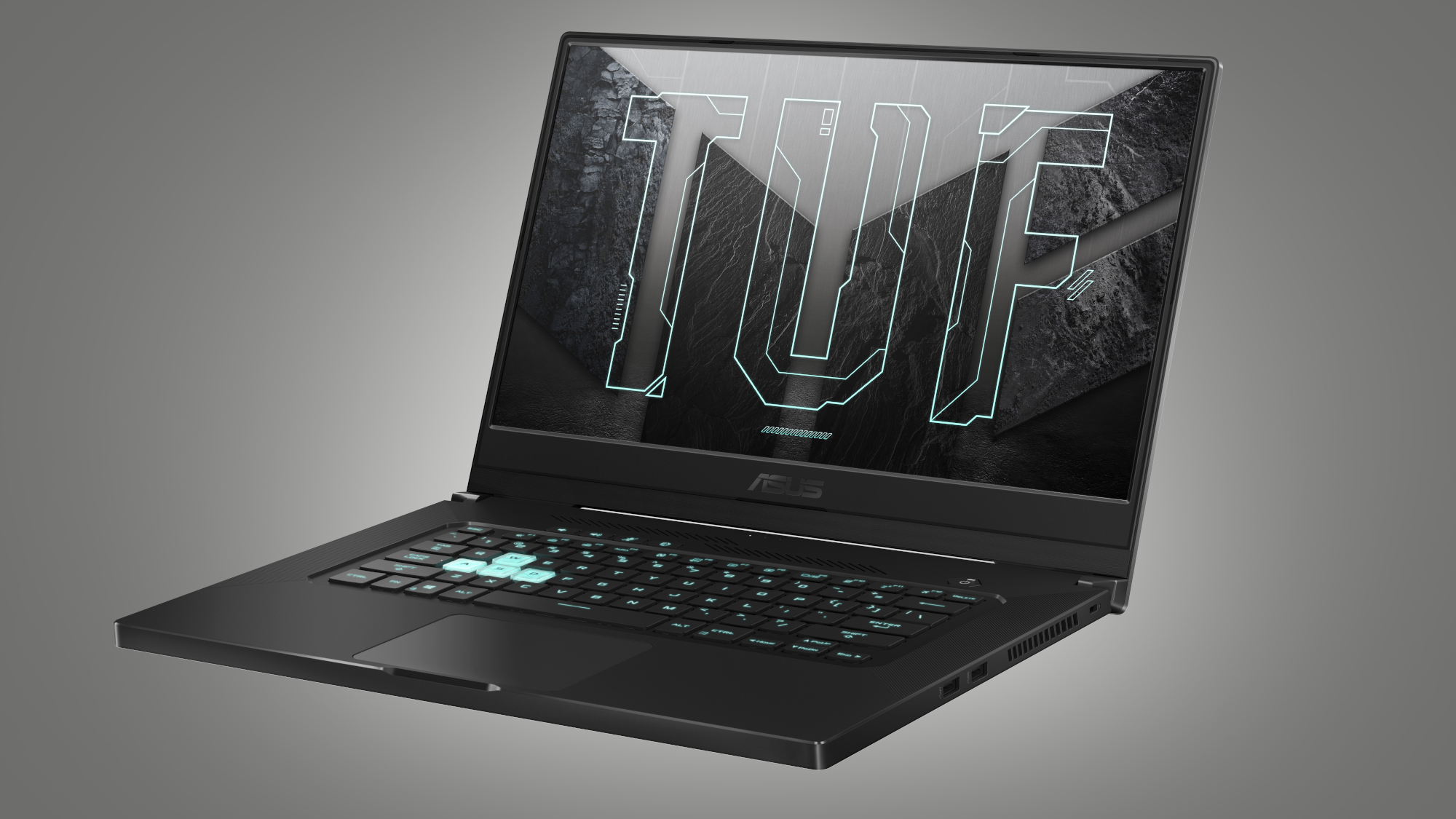
How are they different?
With these new mobile GPUs, it's not like Nvidia just took the existing silicon, shoved it in a laptop and reduced the power. Both the Nvidia GeForce RTX 3080 and GeForce RTX 3070 are entirely different GPUs on mobile, and it's not even a minor difference.
For starters, on mobile, the Nvidia GeForce RTX 3080 is rocking 6,144 CUDA cores across 48 streaming multiprocessors (SMs), 16GB of GDDR6 VRAM on a 256-bit bus and a boost clock up to 1.7GHz.
The desktop card, on the other hand, has 68 SMs with 8,704 CUDA cores, 10GB of GDDR6X VRAM on a 320-bit bus and a boost clock of up to 1.71GHz. CUDA cores aren't everything, but that's a difference of 42%, which naturally leads to the desktop version of the RTX 3080 being much stronger than the laptop GPU.
Similarly, the RTX 3070 for laptops is rocking 5,120 CUDA cores and 8GB of GDDR6 VRAM on a 256-bit bus, where the desktop version of the GPU has 5,888 CUDA cores and 8GB of VRAM on a 256-bit bus. That's just a 15% difference from the desktop version, but at least in the laptop with an RTX 3070 that we tested, the difference is still substantial.
The most drastic difference is in the RTX 3080, and we think that's where a lot of the confusion is going to come from. Yes, the RTX 3080 mobile has 16GB of VRAM while the desktop version has 10GB, and yes, the desktop RTX 3080 is significantly faster regardless.
It's kind of a no-brainer that Nvidia went with 16GB of RAM with the mobile GPU, though, and it all comes down to the memory bus. The mobile version of the GPU is limited to a 256-bit bus, rather than the 320-bit bus found on the desktop-class RTX 3080. This means that Nvidia had a choice to either make the laptop-class GPU have 8GB of VRAM or 16GB of VRAM. From a branding perspective, it's easy to see why they went for the latter, and, it's always good to get more, rather than less.
Maybe this adds some credence to the wealth of rumors that keep pointing to a 20GB variant of the desktop RTX 3080, but that's a discussion for another day.
When you consider that most gaming laptops still have 1080p displays, with more of an emphasis on refresh rate than resolution, it's not surprising to see Nvidia build a graphics processor around that resolution. After all, on desktop, the RTX 3080 makes absolutely no sense on a 1080p display, so why would Team Green launch a laptop graphics card that would be wasted on a vast majority of gaming laptops?
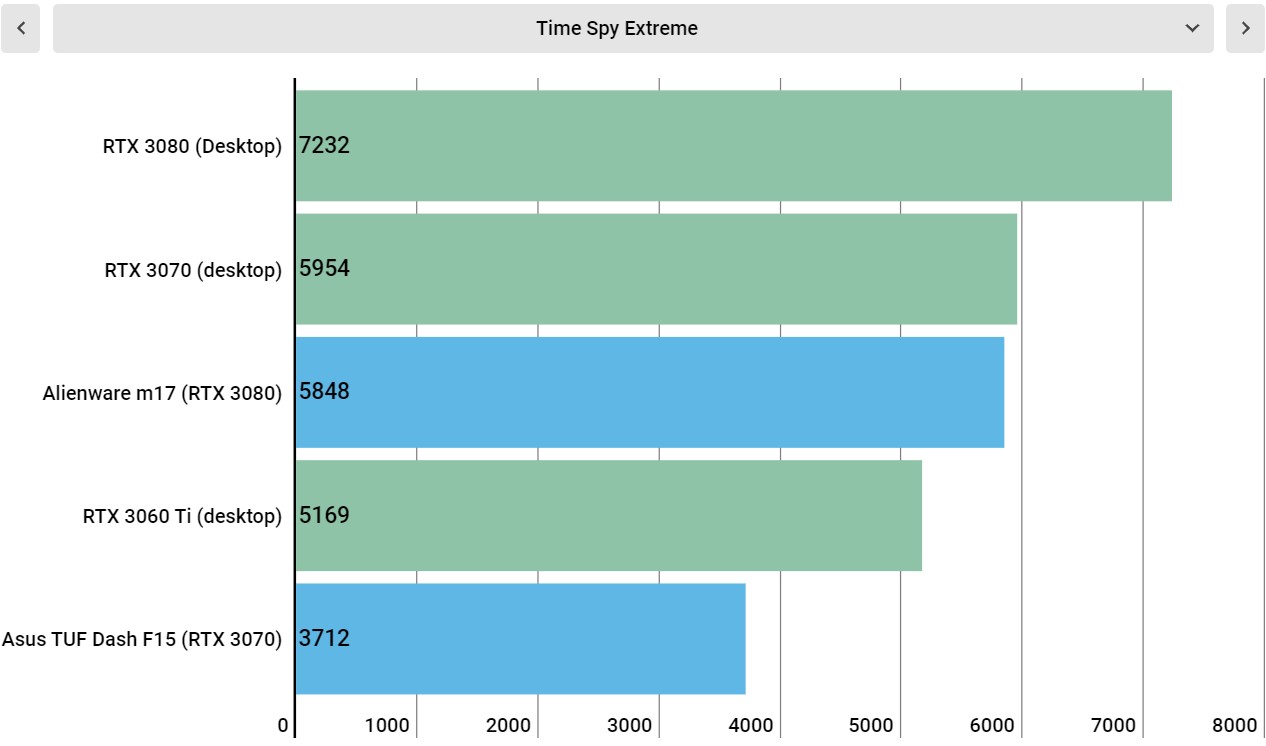
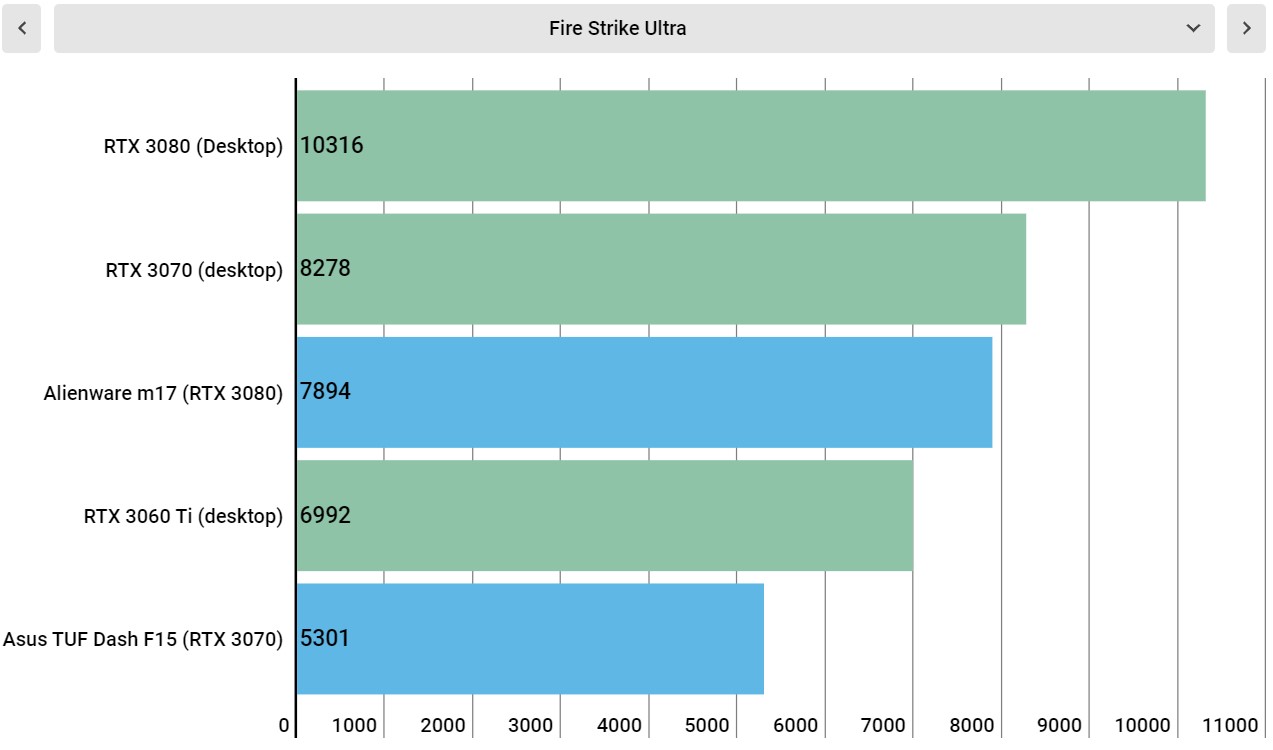
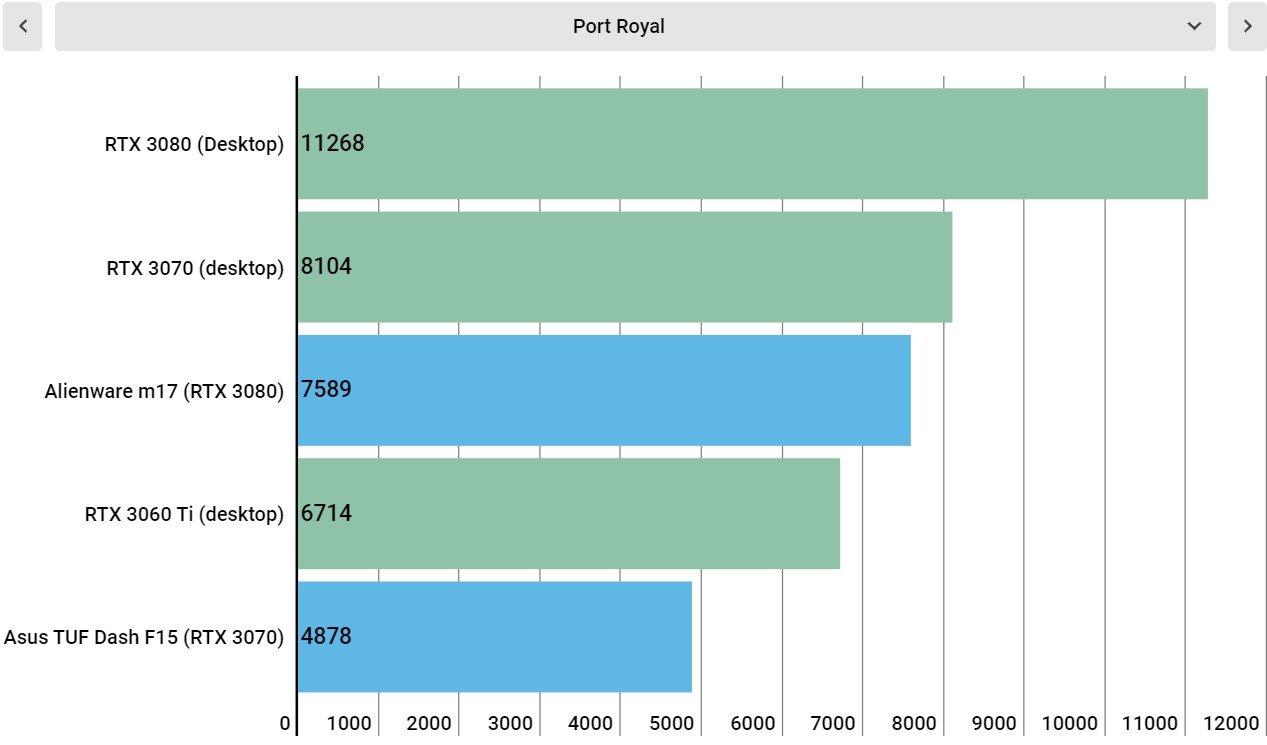
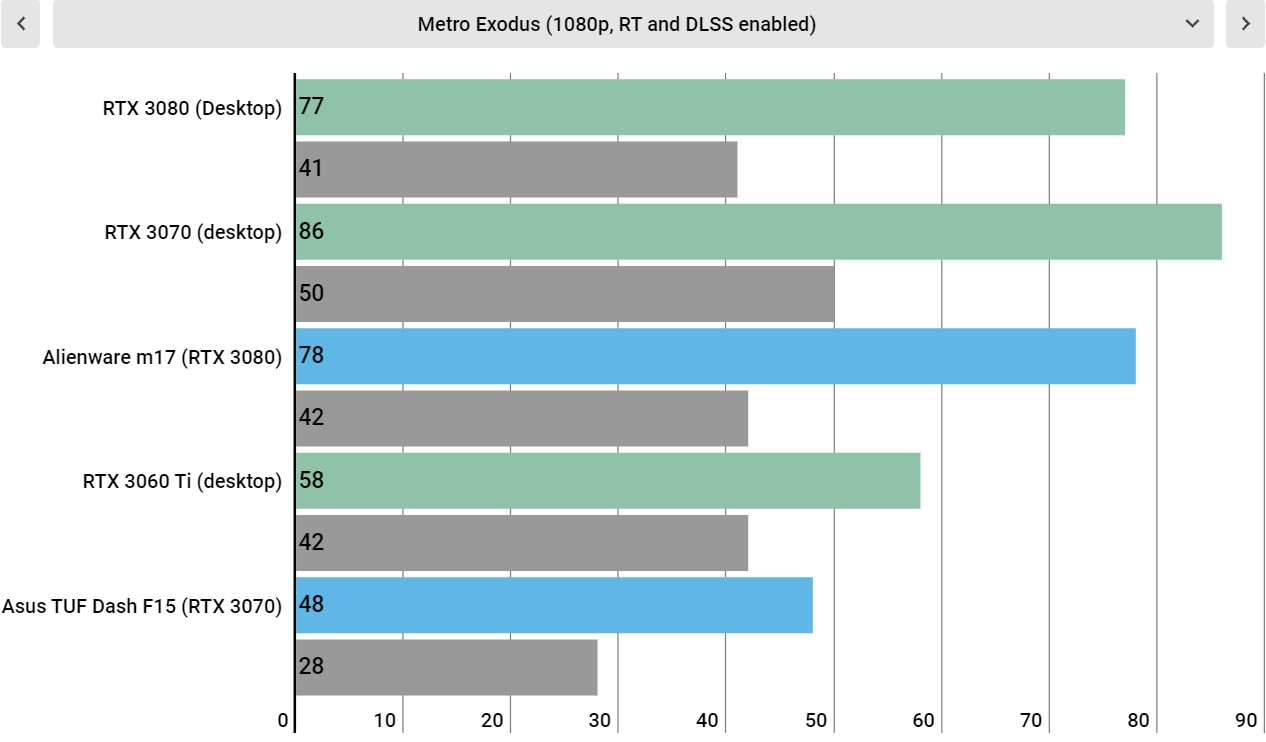
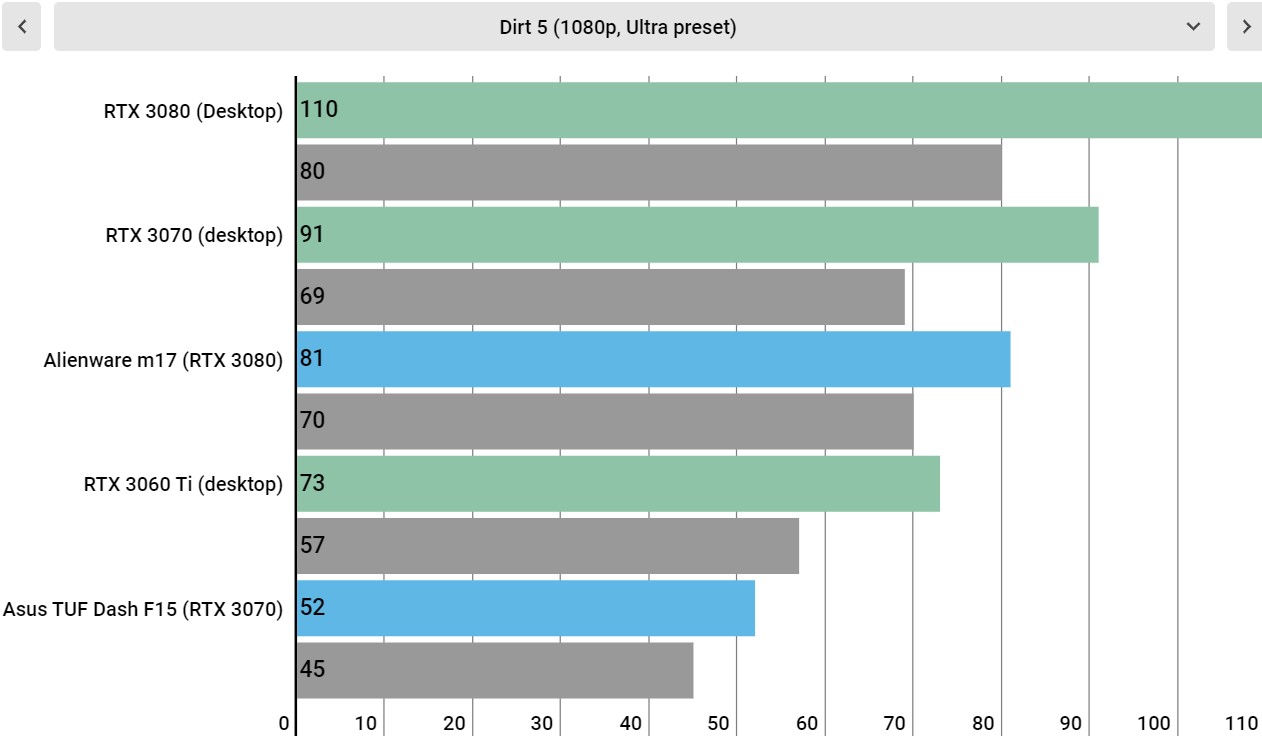
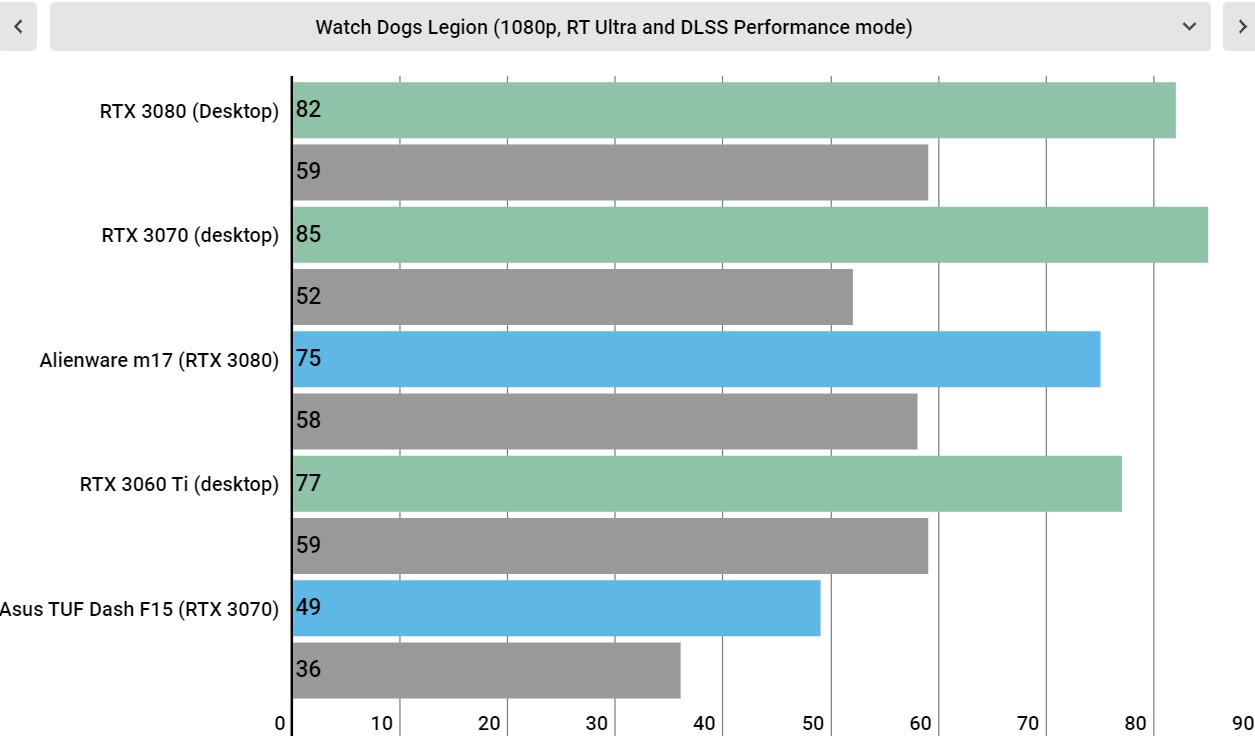
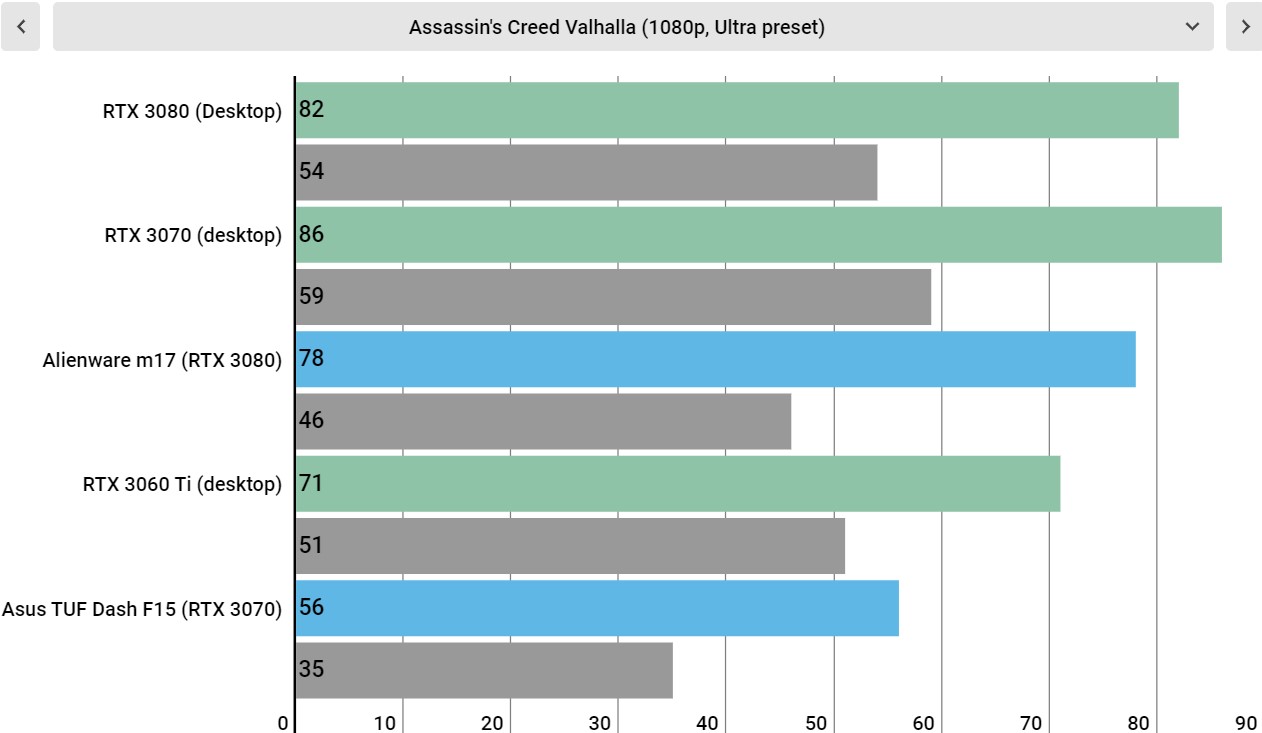
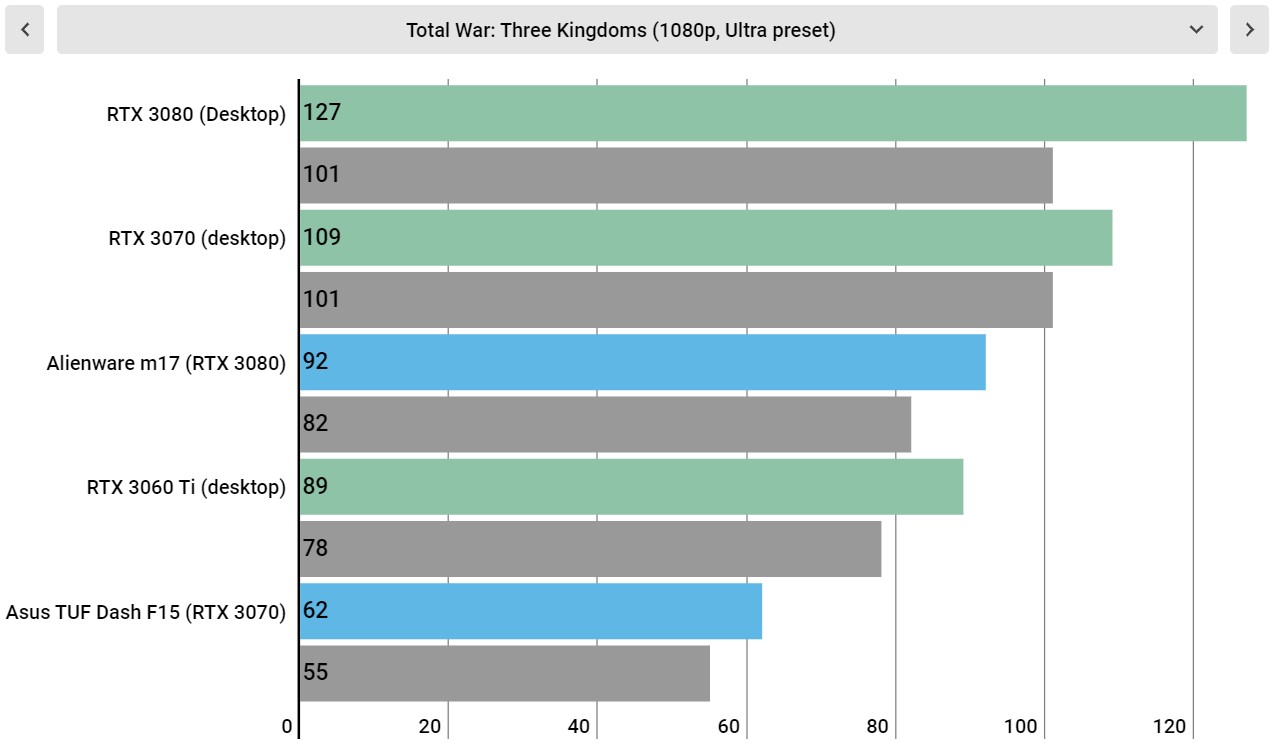
OK, but how fast do they go?
It probably shouldn't come as too much of a surprise that the new Nvidia RTX 3000 mobile GPUs are significantly slower than their desktop counterparts. However, it's a bit more complicated then you might think.
Again, because the two laptops we tested tackle design in very different manors, we get both extremes of what laptop graphics performance looks like. The more extreme example is the Asus TUF Dash F15, which is equipped with the Nvidia GeForce RTX 3070. Now, on paper, it shouldn't be too different than the desktop version of the card, as it only has a 15% difference in terms of CUDA core count. However, because the laptop is such a portable device, Asus lowered the power so it didn't have to include such a robust cooler.
This ultimately results in laptop performance around 60% slower than the desktop version of the RTX 3070, which sounds like a lot, but it's really a perfect fit for the laptop's 1080p display and weaker processor. This is also a laptop that gets something like 10 hours of battery life, which is a trade-off that many people will happily make.
On the other side of the spectrum we have the Alienware m17. Now, this laptop isn't quite on the same level as the beastly Area 51m, but Alienware does configure it to draw a ton of performance out of its GPU. As such, despite the severe cut of CUDA cores on the mobile variant of the 3080, it's only about 20-30% slower than the desktop variant.
What gets spicy here, though, is that there are a few cases where the Alienware m17 actually matches the desktop version of the RTX 3080 at 1080p. The Nvidia GeForce RTX 3080 is comically overkill for 1080p, as games at that resolution simply can't take advantage of the sheer amount of power on offer. The mobile RTX 3080 is just about perfect for it, however, and is just a bit behind the desktop RTX 3070 in most games.
So, for the most part, it looks like each mobile GPU Nvidia launched is a bit more than one tier behind its desktop counterpart. The mobile Nvidia GeForce RTX 3080 is nearly as fast as the desktop RTX 3070, and while the RTX 3070 mobile lags far behind in our tests today, that's likely due to Asus' tuning, rather than the fault of the GPU itself. We expect a full-powered mobile RTX 3070 to come very close to the RTX 3060 Ti.

What does it mean?
It's no secret that 4K gaming laptops aren't exactly common in the industry – which might be a good thing – so there's no reason to put the full power of a gaming PC into a device that's meant to be portable. Hell, the Nvidia GeForce RTX 3080 Founders Edition itself weighs nearly as much as the Asus TUF Dash F15.
Still, it might be time for Nvidia to think about a different naming convention for its mobile graphics processors. While it totally makes sense that a gaming laptop won't have the same level of performance as a hulking tower of a gaming PC you built yourself, there are definitely people out there that may not be familiar enough with the intricacies of the best graphics cards – especially if they're emptying their piggy banks to get a 4K device.
At least these new gaming laptops are more than capable of handling the best PC games while traveling, something that the PS5 and Xbox Series X – with their lack of internal batteries and built-in displays – simply can't do. And, you know what? It's the little things that really matter.
- Here are the best Nvidia graphics cards
Jackie Thomas is the Hardware and Buying Guides Editor at IGN. Previously, she was TechRadar's US computing editor. She is fat, queer and extremely online. Computers are the devil, but she just happens to be a satanist. If you need to know anything about computing components, PC gaming or the best laptop on the market, don't be afraid to drop her a line on Twitter or through email.
